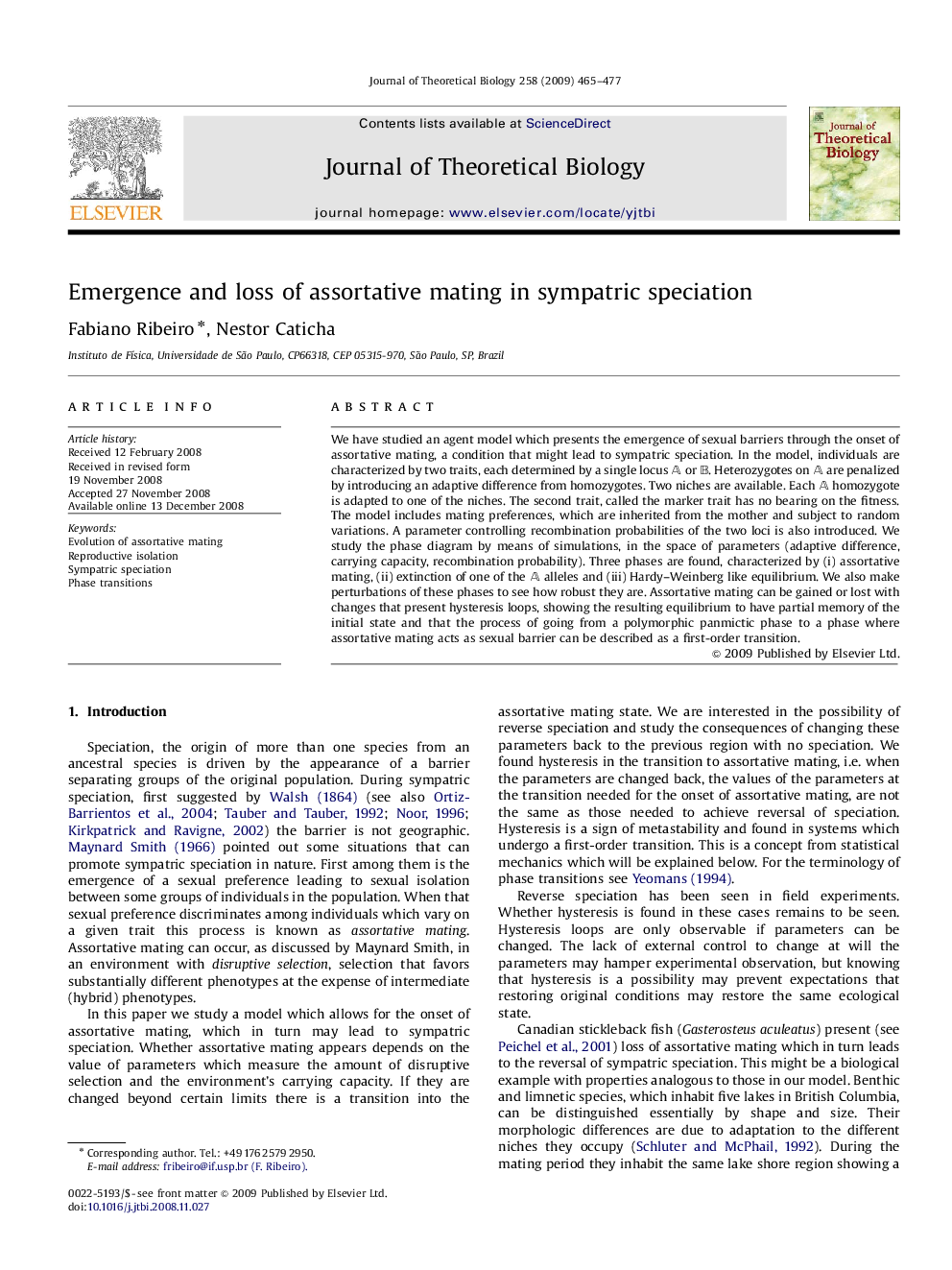| کد مقاله | کد نشریه | سال انتشار | مقاله انگلیسی | نسخه تمام متن |
|---|---|---|---|---|
| 4498002 | 1318960 | 2009 | 13 صفحه PDF | دانلود رایگان |
عنوان انگلیسی مقاله ISI
Emergence and loss of assortative mating in sympatric speciation
دانلود مقاله + سفارش ترجمه
دانلود مقاله ISI انگلیسی
رایگان برای ایرانیان
کلمات کلیدی
موضوعات مرتبط
علوم زیستی و بیوفناوری
علوم کشاورزی و بیولوژیک
علوم کشاورزی و بیولوژیک (عمومی)
پیش نمایش صفحه اول مقاله

چکیده انگلیسی
We have studied an agent model which presents the emergence of sexual barriers through the onset of assortative mating, a condition that might lead to sympatric speciation. In the model, individuals are characterized by two traits, each determined by a single locus A or B. Heterozygotes on A are penalized by introducing an adaptive difference from homozygotes. Two niches are available. Each A homozygote is adapted to one of the niches. The second trait, called the marker trait has no bearing on the fitness. The model includes mating preferences, which are inherited from the mother and subject to random variations. A parameter controlling recombination probabilities of the two loci is also introduced. We study the phase diagram by means of simulations, in the space of parameters (adaptive difference, carrying capacity, recombination probability). Three phases are found, characterized by (i) assortative mating, (ii) extinction of one of the A alleles and (iii) Hardy-Weinberg like equilibrium. We also make perturbations of these phases to see how robust they are. Assortative mating can be gained or lost with changes that present hysteresis loops, showing the resulting equilibrium to have partial memory of the initial state and that the process of going from a polymorphic panmictic phase to a phase where assortative mating acts as sexual barrier can be described as a first-order transition.
ناشر
Database: Elsevier - ScienceDirect (ساینس دایرکت)
Journal: Journal of Theoretical Biology - Volume 258, Issue 3, 7 June 2009, Pages 465-477
Journal: Journal of Theoretical Biology - Volume 258, Issue 3, 7 June 2009, Pages 465-477
نویسندگان
Fabiano Ribeiro, Nestor Caticha,